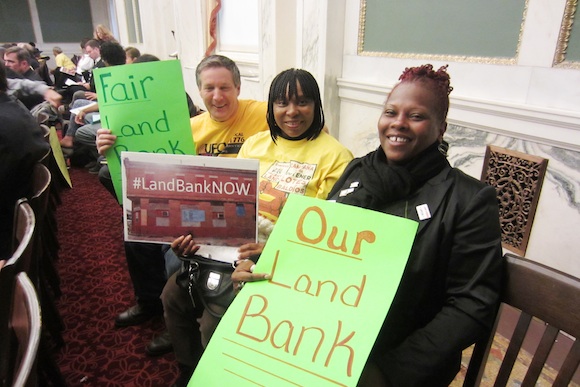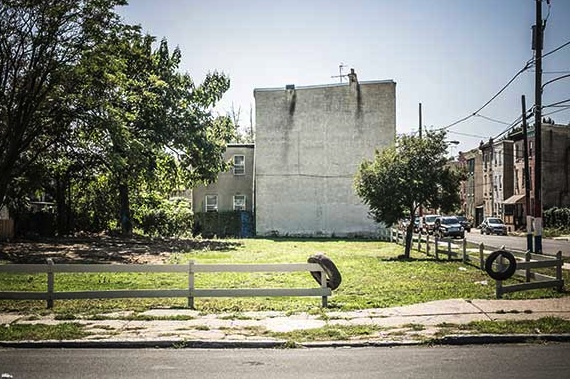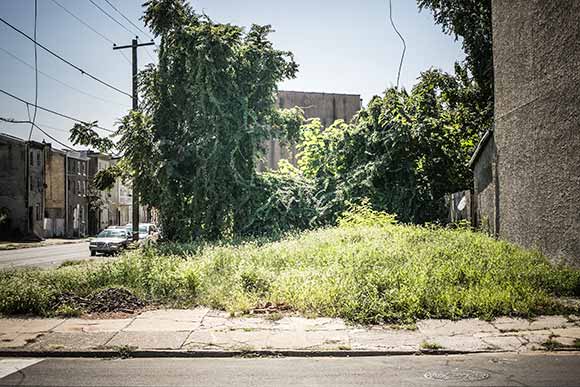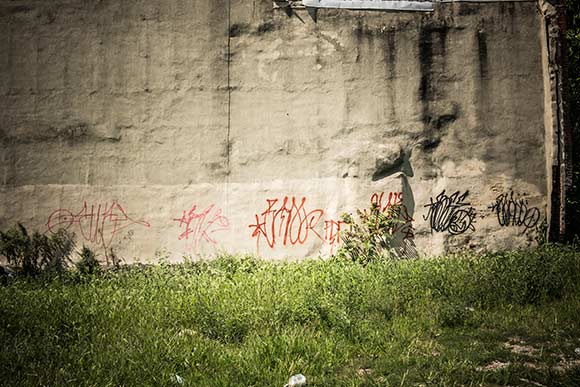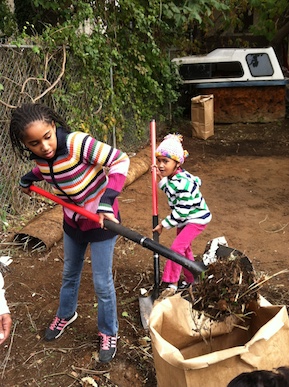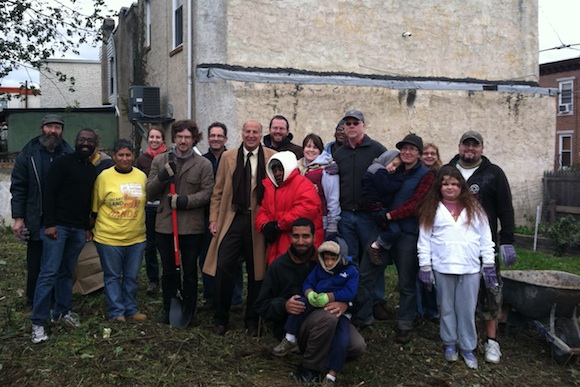Philadelphians celebrated last December when Mayor Michael Nutter signed our city's Land Bank bill, but residents might not realize exactly what made the bill so historic.
Yes, Philly is the most populous city ever to enact a land bank, and it will hold more properties than any other similar entity, but advocates point to the unprecedented diversity of the coalition behind the bill as the real reason it's special. When you have developers, urban farmers, community development corporations (CDCs), food access experts and low-income housing advocates working together, you know something unprecedented is underway.
Of course, there's a lot to do before the bill, sponsored by Councilwoman Maria Quiñones-Sánchez, can reform the existing administrative labyrinth of city-owned and tax-delinquent properties. The goal is a single system that gets problem properties into the hands of productive businesses, developers and communities. The Land Bank's major project is the transfer of approximately 40,000 vacant properties blighting Philadelphia neighborhoods from four separate city agencies into a single one. If all goes according to plan, this should allow the city to dispose of these properties with transparency and a cohesive vision for the maintenance and improvement of neighborhoods.
The potential for that kind of strategic thinking has engaged local planning and community development groups. Jill Feldstein works with the Fairmount-based Women's Community Revitalization Project (WCRP), a grassroots CDC focused on affordable family housing and leadership building for low-income women in Northeast Philadelphia. Back in 2010, as momentum grew for a 2012 state bill enabling land banks in Pennsylvania municipalities, WCRP officially joined the Campaign to Take Back Vacant Land (CTBVL).
When asked why WCRP jumped in, along with almost 50 partner organizations as diverse as the Arab American CDC and the Philadelphia Orchard Project, Feldstein points to a 2008 WCRP mapping study.
“At the time, one of out every four pieces of land was vacant,” says Feldstein of her organization's target area between Northern Liberties, Fishtown and Temple University. “The second-highest use of land in that neighborhood was actually no use at all…the equivalent of 79 football fields of vacant land.”
Numbers like that quickly galvanized other disparate groups, including disability rights activists, fresh food and urban farming leaders, varied religious groups and labor unions invested in members' affordable housing.
Rick Sauer, executive director of the Philadelphia Association of Community Development Corporations, agrees about the notable range of “non-traditional” alliances. They worked to make an “agreement on what we would jointly advocate for and creating a unified message and voice around that effort,” says Sauer.
Including grassroots voices was essential — this was not going to a be a free-for-all for developers.
“How can we get rid of vacant land which nobody likes, and do it in a way that's going to promote the kind of development that people in neighborhoods want to see?” Feldstein asks. In other words, it's about improving the neighborhood without displacing people.
“I always talk about the land bank as a vehicle,” continues Feldstein. “This is a vessel, but how can we infuse that vessel with our values?”
These include accountability on the part of the new owners, community input on how the land is developed and transparency on the part of the city. According to CTBVC, transparency means two things: community access to “information about who gets land for what purpose and what they paid for it,” but also aggregate annual reports to ensure equitable distributions overall. Community voices kept these concerns front and center as the Philadelphia Land Bank legislation progressed.
For CTBVC, a viable land bank is just a starting point that should lead to community land trusts. While municipal land banks focus on consolidating ownership of vacant properties and getting them on the market, land trusts (Feldstein estimates there are about 270 of them across the country) focus on protecting “the use and affordability of what happens [to] land for a long period of time.”
There are endless opportunities to use vacant land as a tool for broader urban change. Dwayne Wharton, The Food Trust's director of external affairs, testified before City Council to affirm his organization's support for the bill, which could help bring much-needed supermarkets and other fresh food sources to low-income neighborhoods.
Parcels of land large enough to support a successful supermarket can be hard to come by in a crowded city, says Wharton, and when multi-agency bureaucracies complicate the purchase process, food deserts become an even more stubborn problem. Higher rates of diet-related disease like obesity and hypertension correlated with a lack of nearby supermarkets are often the start of conversations the Food Trust has with these businesses “about their lack of presence in those communities and what it means for [their] health,” explains Wharton.
“We do it not from a position of blame, but from a point of needing to understand what [the supermarkets'] issues and barriers are,” says Wharton. “They'd rather go into areas where it's less bureaucratic.”
Besides opening up potential spaces for urban farms, gardening and farmers markets, the land bank should “streamline the process to make it clear and apparent and open for businesses, [so] they know what they can get…[and] how they can acquire it,” says Wharton. It should also give these businesses the ability to assemble land parcels large enough to construct an adequate size market for those communities. And those stores don't just bring healthy food where it's needed most, they also bring jobs and improve commercial corridors by anchoring other businesses.
Explaining the land bank's benefits has taken a lot of legwork on behalf of its community supporters. “You have to do a lot of education to tell people what it is and how it'll benefit them,” explains Feldstein. For CTBVL, that effort meant meeting with City Council members and candidates about vacant land in their districts, a City Hall symposium, and a lot of community meetings. They also ran a city-wide contest in 2012 called “Best Lot, Worst Lot,” which solicited entries for “the worst and ugliest vacant lot in the city,” and a lot made beautiful or useful by an active individual or community group.
Feldstein says another tactic was posting “danger” signs on vacant lots to stimulate awareness for the blight, trash and crime they attract.
Sauer says building a wide community coalition “took a lot of education around how the current system really is broken,” and addressing the needs of individual homeowners, CDCs, developers and gardeners. This included producing informational flyers, holding community briefings, and acting as a liaison between City Council, the Planning Commission and neighborhood groups.
The work is far from over. 2014 will see the appointment of a permanent board, the land bank's incorporation as a separate entity under the Philadelphia Housing Development Corporation, budget appropriations and union negotiations for the City workers who will staff the Land Bank.
And of course the properties in question still need to be transferred from agencies like the Redevelopment Authority and the Department of Public Property into the Land Bank. This fall, the city will issue an RFP for consultants to develop a strategic plan that could get properties on the market through the land bank by the end of the year.
So, would the legislation have passed without the push from such a broad community coalition?
“I don't think so,” says Feldstein.”I do think it's one of the best examples of creating the political will by virtue of so much community support.”
Sauer agrees.
“I think it made a big difference,” he says. “We might possibly have been able to get it done without pulling everyone together, but it would have taken longer, and we wouldn't have been successful in getting as strong as a bill as we did get.”
ALAINA MABASO, a Philadelphia-based freelance journalist, has landed squarely in what people tell her is the worst possible career of the twenty-first century. So she makes Pennsylvania her classroom, covering everything from business to theater to toad migrations. After her editors go to bed, she blogs at alainamabaso.wordpress.com. Find her on Twitter @AlainaMabaso.

